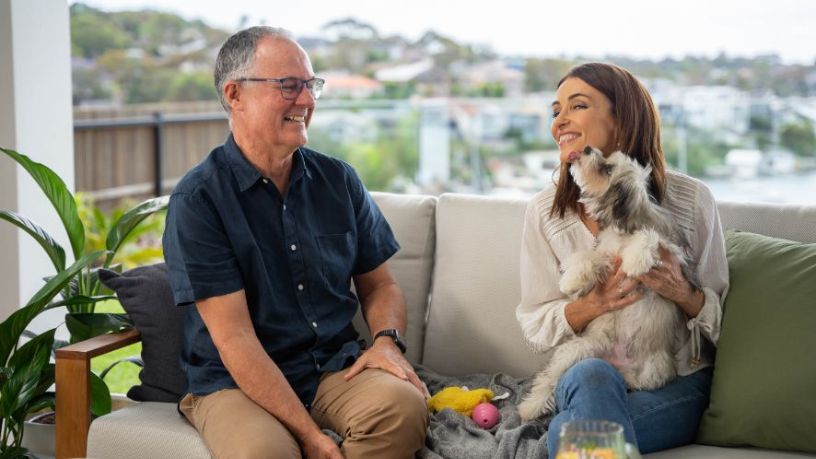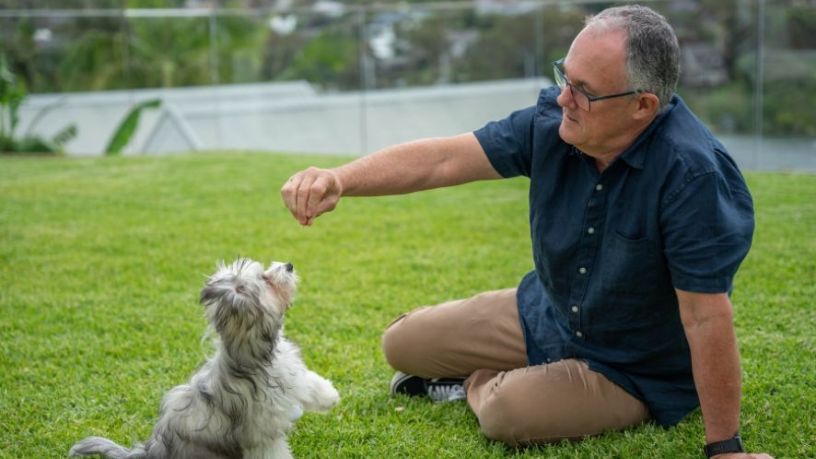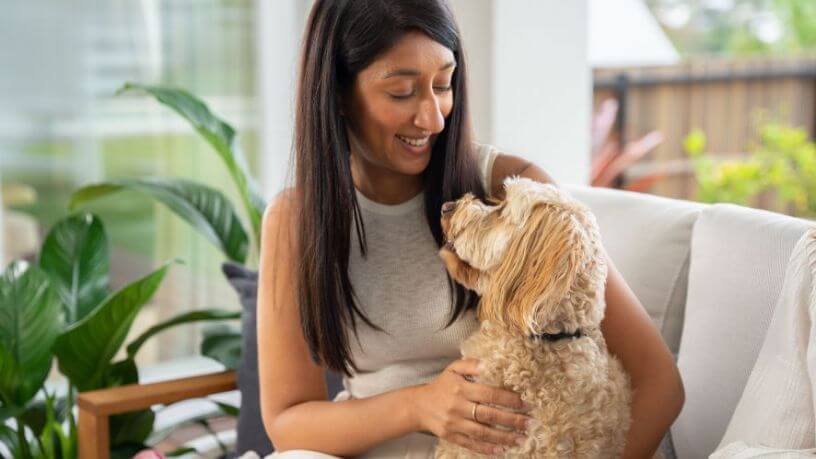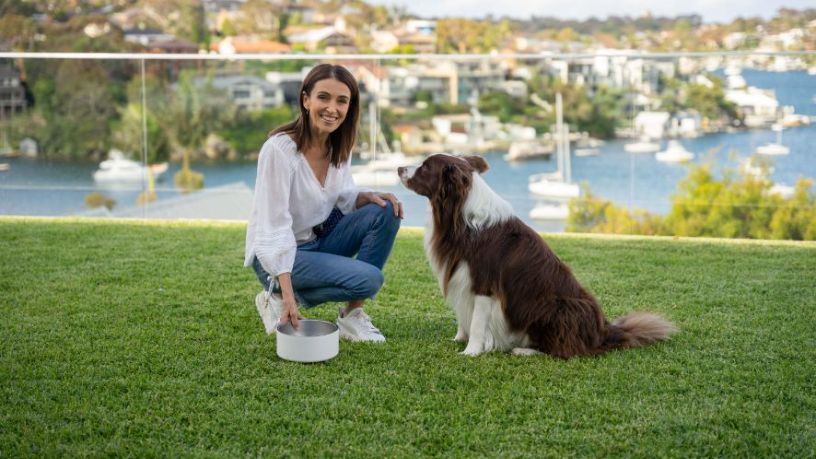Start toilet training the day you bring your puppy home with puppy pads. That way you can start praising them for getting it right early on.
On this page
Key takeaways
Never yell at or punish a pup for having an accident.
Give your puppy plenty of opportunities to go to their designated area to pee and eventually they’ll get it right.
For the sake of your floors, rugs and carpets (not to mention your sanity!), it’s essential that puppies are toilet trained as soon as possible.
And there are other important benefits to teaching your new dog to go relieve themselves on puppy training pads, a grass patch or outside.
“Successfully toilet training your pup is important for their hygiene and comfort, and great for your peace of mind, as it means fewer accidents and less stress,” explains Australian veterinarian and TV personality Dr Katrina Warren.
While puppy toilet training can be a long and often-times frustrating process, don’t give up. As with all puppy training, it takes patience and perseverance. To help you get started, here are some tips for puppy toilet training that will help make your journey a successful one.
What's best way to toilet train a puppy?
Reward-based positive reinforcement training is the best way to toilet train a puppy. This means rewarding your pup every time they go in the place you want them to.
For most people in the throes of puppy toilet training, grass is the chosen toileting spot. But you may want to have some puppy training pads, particularly if you live in an apartment or don’t have a grassy area nearby. You can buy washable, reusable puppy training pads or single-use pads.
Set your puppy up for success by taking them to their toileting area regularly, giving them frequent opportunities to go in the right spot.
It may be helpful to set an hourly alarm or reminder on your phone. When the alarm goes off, pop your pup on their lead and take them to the designated toileting area. When they go, reward them with praise, a treat and a little play.
How to toilet train your puppy
Here’s a handy step-by-step guide on how to toilet train your puppy:
1. Watch for signs
While taking your pup out every hour is a good plan, there are also signs to look out for.
“These include sniffing around, fidgeting and beginning to circle before squatting,” says Dr Warren. “A whining or pacing pup may also be trying to let you know that they need to go. Getting to know these signs and acting quickly will mean fewer accidents.”
2. Take them to the chosen spot
Whether it’s a puppy training pad or out in the garden, the moment your pup indicates they need to go, put their lead on and take them to this area. Supervise and be patient. It’s important not to play with them while you wait so they learn that toilet time is different to playtime. If they don’t go, don’t be worried or get angry with them. Take them back inside and try again later.
3. Reward good behaviours
When your puppy does go in the right spot, reward them with treats, pats and plenty of praise.
Be prepared for accidents
No matter how prepared and diligent you are, accidents are unavoidable, so prepare yourself for your new dog going somewhere you don’t want them to. But as with all things training related, punishment is never the answer.
“If your puppy does have an accident, don't punish them as it'll make them scared to go in front of you next time,” says Dr Katrina. “Puppies have small bladders. Even if you offer frequent opportunities to go, chances are you might not always catch them before they go.”
If your pup goes to the toilet somewhere they shouldn’t or doesn’t make it to their puppy training pads, don’t get angry, shout or make a fuss. They haven’t done this on purpose. Just like babies, they don’t yet have control of their bladder.
Calmly clean up the mess using an ammonia-free or enzymatic cleaning product which removes the scent. This is important as if dogs detect any lingering smell of urine, faeces or ammonia, they may build an association with this spot and toilet there again. Continue to reward when they go in the right spot and your pup will eventually get there.
If you think your pup is about to go in the wrong place, interrupt them calmly and take them to the correct spot. They may or may not make it, but it’s worth a try.
Helpful tips for puppy toilet training
Puppies generally need to urinate every hour, so give them lots of opportunities to go.
Puppies usually need to go to the toilet shortly after waking up and after a meal, says Dr Warren. “Take your puppy outside immediately after waking and eating, then wait patiently until they go.”
Live in an apartment without a garden? When puppy toilet training, grass ‘toilets’ that are designed to sit on the balcony may be a good option to get your pup used to the sensation of toileting on grass without having to make a trip outside.
Puppies have accidents when they’re given free run of the house. Use a puppy play pen to confine them when you can’t actively supervise them.
If your lawn is your pride and joy, you might want to consider choosing a non-grassed area to devote to your pup’s needs. Grass can turn yellow in patches where your pup regularly goes because the nitrogen in urine builds up and burns the grass.

At Bupa, trust is everything
Our health and wellbeing information is regularly reviewed and maintained by a team of healthcare experts, to ensure its relevancy and accuracy. Everyone's health journey is unique and health outcomes vary from person to person.
This content is not a replacement for personalised and specific medical, healthcare, or other professional advice. If you have concerns about your health, see your doctor or other health professional.
You might also like...
How to teach a puppy not to bite
It’s normal for young puppies to bite, but it’s important to instil some good habits with proper training early on to prevent problems in the future.
How to train your dog the right way
Done right, training can improve your pup’s confidence, help you create a loving and healthy bond, and be a lot of fun! But which training style is best?
5 golden rules for dog training
Time to teach your dog the house rules? We’ve put together 5 tips to help make obedience training easy, stimulating, and a lot of fun for your fur-baby!
How to teach a dog to come when called
Teaching your dog to come when you call is one of the most important things you can do to keep them safe when you’re out and about. So, how does recall training work?





